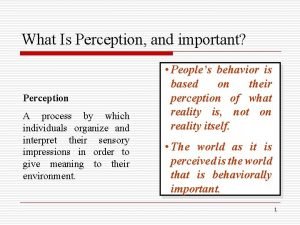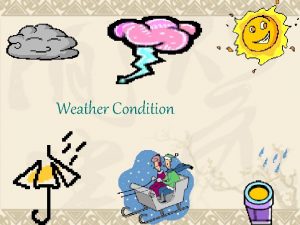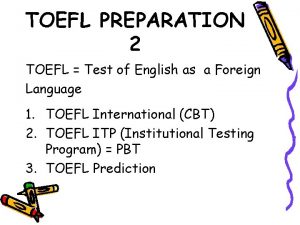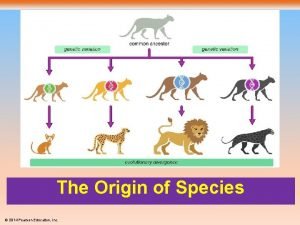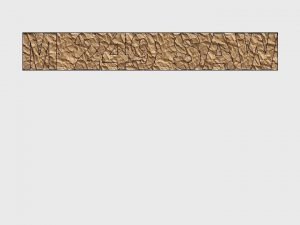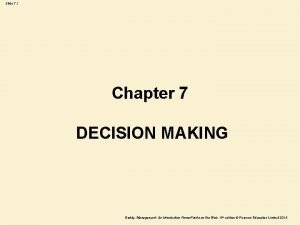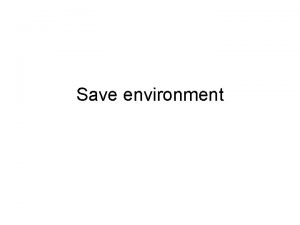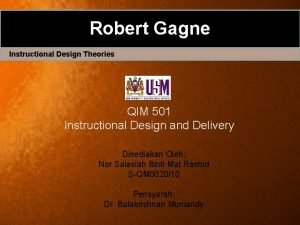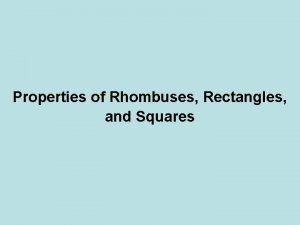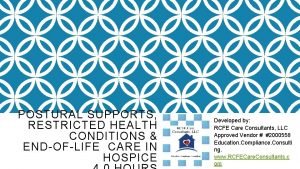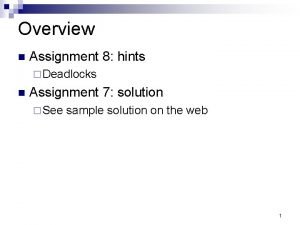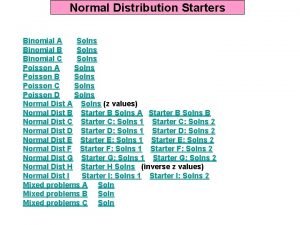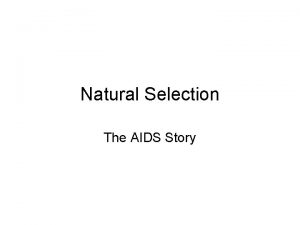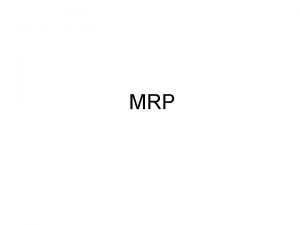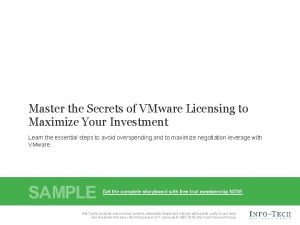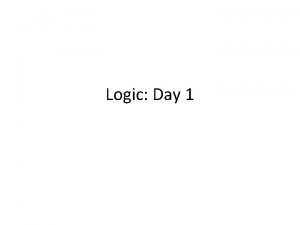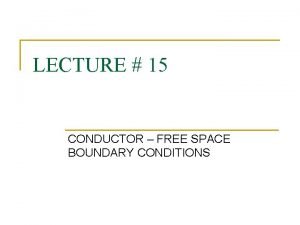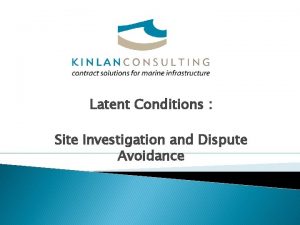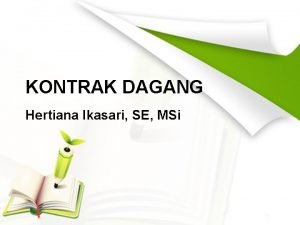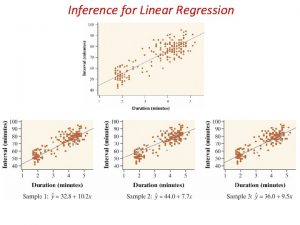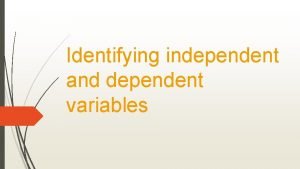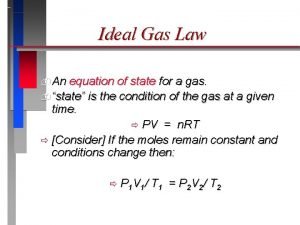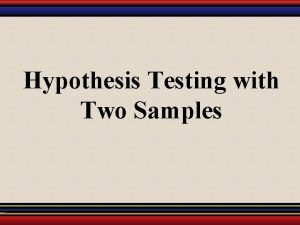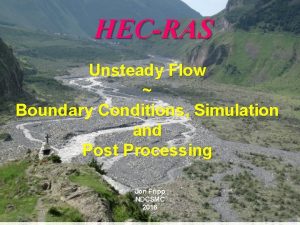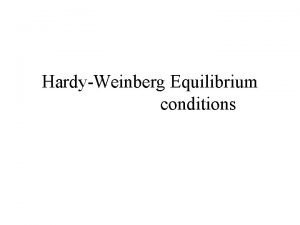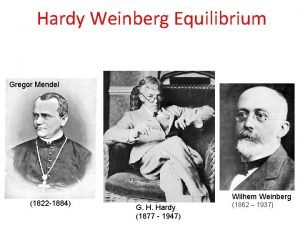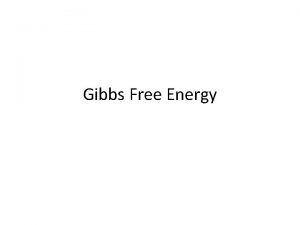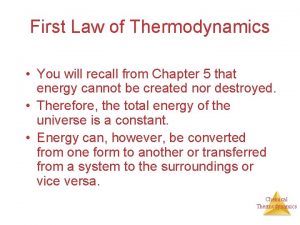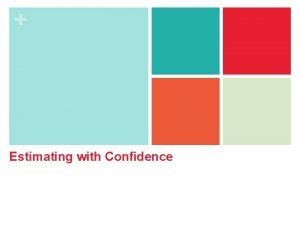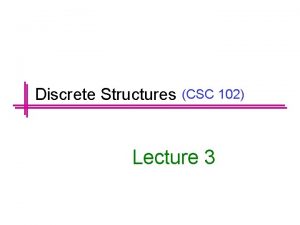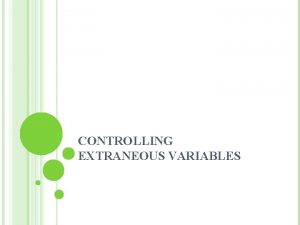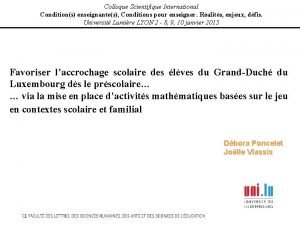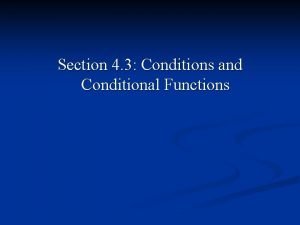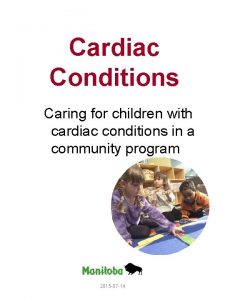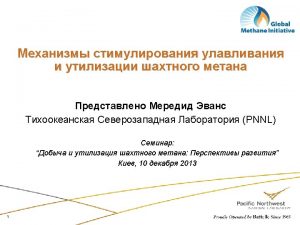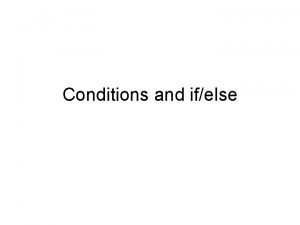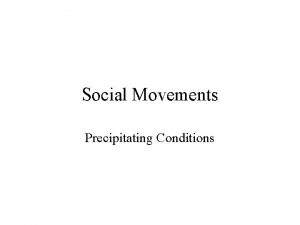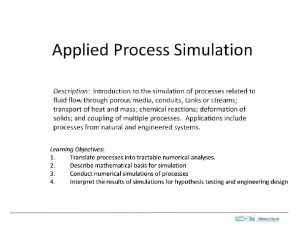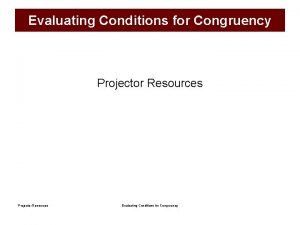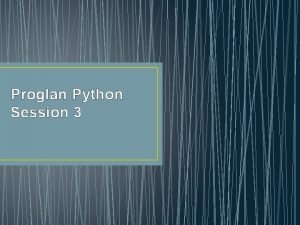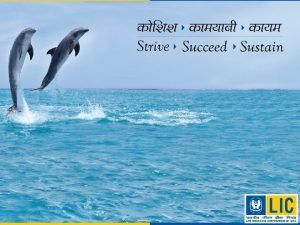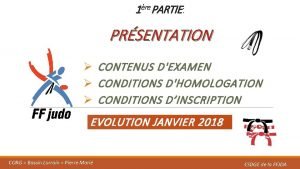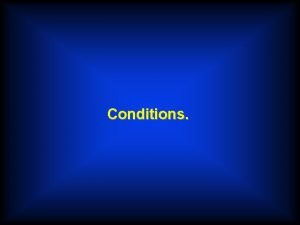Conditions of use of this presentation This presentation


























































- Slides: 58


Conditions of use of this presentation ● This presentation is published under a Creative Commons No. Derivatives 4. 0 International (CC BY-ND 4. 0) license. ● This means that you can distribute this presentation as is, but that you are not permitted to distribute a modified version. The licence requirements are that: ○ You can copy and redistribute this presentation in any medium or format for any purpose, even commercially. ○ You must give appropriate credit (to Bruce Boyes and Real. KM Magazine) and provide a link to the license. ○ If you remix, transform, or build upon the presentation material, you may not distribute the modified material. 2

KM transformation must consider “how” we do things, and not just “what” we do Bruce Boyes, Editor and Lead Writer, Real. KM Magazine www. bruceboyes. info www. realkm. com

4

5

6

7

8

9

10

On 16 February 2018, the United States Department of Justice announced that a grand jury had returned an indictment charging thirteen Russian nationals and three Russian companies “for committing federal crimes while seeking to interfere in the United States political system, including the 2016 Presidential election. ” 11

12

13

14

15

How Maslow’s theory became a management meme ● Maslow originally proposed a “ladder of human needs”, a psychology theory that addressed human potential. Others took this theory, generalized it, turned it into a management theory, and then turned it into a hierarchical pyramid. ● The hierarchy of needs pyramid suggests that people are motivated to only satisfy one need at a time, with each level needing to be satisfied before ascending to the next level. But Maslow did not endorse this view. Rather, he acknowledged the complexity of human behaviour. 16

What’s the evidence for these practices? ● Banning social media use at work ● Net Promoter Score (NPS) ● Unconscious Bias Training (UBT) ● Implicit Association Test (IAT) ● Nudge management ● Predictive algorithms ● Fining parents for student absence ● Student evaluation of teaching ratings 17

What about knowledge management? ● Critical analysis, for example by Stephen Bounds (Real. KM founder) and Patrick Lambe (Straits Knowledge), reveals that KM has a mixed track record in regard to evidencebased practice. ● This means that KM is now falling behind the overall field of management and also other management disciplines such as HR. 18

19

20

21

22

Evidence-based KM 23

Core knowledge ● Evidence-based practice and evidence-based management ● The four sources of evidence ● The six steps in evidence-based practice ● Information literacy ● Evidence from practitioners and stakeholders ○ Open, inclusive, participatory processes ● The scientific literature ○ Systematic reviews ○ The uneven global knowledge base 24

25

26

The four sources of evidence ● The scientific literature. The first source of evidence is scientific research published in academic journals. To be able to include up-to-date evidence from the scientific literature in your decision-making, it is essential to know how to search for studies and to be able to judge their trustworthiness and relevance. ● Evidence from the organisation. A second source of evidence is the organisation itself. Organisational evidence comes in many forms, for example financial data, operational data, or client and employee feedback. 27

The four sources of evidence ● Evidence from practitioners. A third source of evidence is the professional experience and judgement of managers, consultants, business leaders, and other practitioners. Professional experience is not intuition, opinion, or belief. Rather, it is the specialized knowledge acquired through repeated experience and reflection over time. ● Evidence from stakeholders. A fourth source of evidence is stakeholder values and concerns. Stakeholders are any individuals or groups who may be affected by an organisation’s decisions and their consequences. They can be internal or external to the organisation. 28

The six steps and information literacy 1. Asking: translating a practical issue or problem into an answerable question 2. Acquiring: systematically searching for and retrieving the evidence 3. Appraising: critically judging the trustworthiness and relevance of the evidence 4. Aggregating: weighing and pulling together the evidence 5. Applying: incorporating the evidence into the decision-making process 6. Assessing: evaluating the outcome of the decision taken Information literacy: ● Develops skills in asking, acquiring, and appraising 29

Evidence from practitioners and stakeholders 30

31

“If KM is a complex phenomenon, which I challenge anyone to contest, and, if this ISO is to be taken seriously, in terms of anticipating/influencing the future direction of the phenomenon, where are the credible international experts (i. e. active practitioners form across the globe – this, after all, being international standards) from the fields of AI, Machine Learning, complexity, strategy, HR, L&D Talent Management etc. ” “Ignoring the fact that the committee has obviously run out of ideas for KM, how can anyone possibly claim to take a holistic view when the committee has constrained the view by failing to involve the spectrum of Knowledge Management stakeholders required to develop such a view” David Griffiths, December 2017 [emphasis added] 32

Evidence from practitioners and stakeholders ● Practitioners: Professional experience and judgement of managers, consultants, business leaders, and other practitioners. Professional experience is not intuition, opinion, or belief. Rather, it is the specialized knowledge acquired through repeated experience and reflection over time. ● Stakeholders: Stakeholder values and concerns. Stakeholders are any individuals or groups who may be affected by an organisation’s decisions and their consequences. They can be internal or external to the organisation. 33

34

35

36

37

38

39

40

The scientific literature 41

The scientific literature ● The first source of evidence is scientific research published in academic journals. ● To be able to include up-to-date evidence from the scientific literature in your decision-making, it is essential to know how to search for studies and to be able to judge their trustworthiness and relevance. The reality: ● Unfortunately there’s an abundance of poor science and hyped science. 42

43

44

45

46

47

48

49

Avoiding low-quality research ● Be cautious of hyped or heavily marketed research. ● Carefully examine any single studies you are thinking of using. ● Be aware of predatory journals. ● A better alternative to single studies is to use systematic reviews. ● Systematic reviews “can help address managerial problems by producing a reliable knowledge base through accumulating findings from a range of studies. ” ● As much as possible, I used systematic reviews as the basis for my Real. KM Magazine articles. 50

A note about meta-analyses ● A common misconception is that systematic reviews and meta-analyses are the same thing, and the terms are often used interchangeably. ● However, they are different but related activities: ○ A systematic review is a detailed, systematic and transparent means of gathering, appraising and synthesising evidence to answer a welldefined question. ○ A meta-analysis is a statistical procedure for combining numerical data from multiple separate studies. A meta-analysis should only ever be conducted in the context of a systematic review. 51

Countries of the global North (coloured blue) and global South (coloured red) 52

World scaled by number of documents in Web of Science by authors living there, 2011 53

Geographic distribution of KM research articles, 1974 to 2017 54

Real. KM Magazine: evidence-based, practical results ● Real. KM Magazine www. realkm. com was established three years ago with the aim of encouraging and assisting evidence-based KM. Sign up for the Weekly Wrap e-newsletter, or follow on social media. ● We’ve now published over 800 articles on a wide range of KM and related topics, including evidence summaries (mostly from systematic reviews) and longer feature articles with in-depth analysis. ● I would like to thank Stephen Bounds and Dr Arthur Shelley (Real. KM Platinum Patrons), Patrick Lambe (Real. KM Gold Patron), Aprill Allen and Stuart French (Real. KM Silver Patrons), and all of our other greatly valued patrons for making Real. KM Magazine and its continued growth possible. 55

Recommended websites and further reading Websites: ● Real. KM Magazine www. realkm. com ● Center for Evidence-Based Management (CEBMa) www. cebma. org Articles: ● The disastrous effects of opinion-based decisions, and how knowledge management can be better evidence-based www. realkm. com/2018/02/16/the-disastrous-effects-of-opinion-based-decisionsand-how-knowledge-management-can-be-better-evidence-based ● Using narrative reviews, systematic reviews, and meta-analyses in evidence-based knowledge management (KM) www. realkm. com/2018/05/18/narrative-reviews-systematic-reviews-metaanalyses ● Information literacy and evidence-based knowledge management www. realkm. com/2018/08/24/information-literacy-and-evidence-based-knowledge-management ● KM standard controversy: lessons from the environment sector in regard to open, inclusive, participatory processes www. realkm. com/2018/03/23/km-standard-controversy-lessons-from-theenvironment-sector-in-regard-to-open-inclusive-participatory-processes 56

References and image credits (in order of appearance) • • • • • Maslow’s hierarchy of needs: Wikimedia Commons, CC BY-SA 3. 0, https: //commons. wikimedia. org/wiki/File: Maslow%27 s_Hierarchy_of_Needs. svg Maslow’s hierarchy of needs WIFI: Duncan Hull �� on Flickr, CC BY 2. 0, https: //flic. kr/p/f. PTn. W 1 Management and Motivation, Buchbinder, S. B. , & Shanks, N. H. (Eds. ). (2011). Introduction to health care management. Jones & Bartlett Publishers. Theories of Motivation, Buchbinder, S. B. , & Shanks, N. H. (Eds. ). (2011). Introduction to health care management. Jones & Bartlett Publishers. Obama signs Executive Order Banning The Pledge Of Allegiance In Schools Nationwide!!!: https: //mainerepublicemailalert. com/2016/08/22/obama-signsexecutive-order-banning-the-pledge-of-allegiance-in-schools-nationwide/ Fake overlay: Pixabay, https: //pixabay. com/en/fake-forgery-counterfeit-fraud-1726362/ 50 Of The Biggest Fake News Hits On Facebook From 2016: https: //www. buzzfeednews. com/article/craigsilverman/top-fake-news-of-2016 United States Department of Justice indictment, https: //www. justice. gov/opa/press-release/file/1035562/download Executive Order 13673, 2014 Executive Orders Signed by Barack Obama, https: //www. archives. gov/federal-register/executive-orders/2014. html Who Built Maslow’s Pyramid? : Bridgman, T. , Cummings, S. , & Ballard, J. A. (2018). Who Built Maslow’s Pyramid? A History of the Creation of Management Studies’ Most Famous Symbol and Its Implications for Management Education. Academy of Management Learning & Education, https: //doi. org/10. 5465/amle. 2017. 0351 How Maslow’s theory became a management meme: https: //blog. hypeinnovation. com/how-management-theories-become-memes What about knowledge management? : https: //realkm. com/2018/02/16/the-disastrous-effects-of-opinion-based-decisions-and-how-knowledge-managementcan-be-better-evidence-based/ Trust me, 20 years of management experience: https: //www. cebma. org/teaching-materials/ Center for Evidence-Based Management (CEBMa): www. cebma. org Make Better Decisions with Evidence-Based HR: https: //www. shrm. org/hr-today/news/hr-magazine/1217/pages/make-better-decisions-with-evidencebased-hr. aspx In search of the best available evidence: https: //www. cipd. asia/knowledge/reports/evidence-based-practice 4 sources of evidence, 6 steps of evidence-based practice: http: //www 2. cipd. co. uk/community/discussion-forum/evidence-based-hr/f/240/t/65043 Knowledge Management ISO 30401 (something rotten in the state of Denmark): https: //www. k 3 nextgensolutions. com/ Men burn copies of the Murray-Darling draft plan in the NSW town of Griffith: https: //www. theaustralian. com. au/national-affairs/murray-darling-guide-fails -to-sufficiently-consider-human-cost-says-simon-crean/news-story/86 dbba 366865 e 06 f 6641771 b 695 f 096 d? sv=acf 245527 c 81 ec 44 e 0 e 75 f 73983261 fc 57

References and image credits (continued) • • • • Murray-Darling Basin Map: http: //www. abc. net. au/news/2017 -06 -05/murray-darling-basin-map/8587898 Water plan process flawed: https: //realkm. com/wp-content/uploads/2018/03/036_10 nr-2. pdf Cry Me a River: https: //www. smh. com. au/environment/sustainability/cry-me-a-river-mismanagement-and-corruption-have-left-the-darling-dry-20180226 p 4 z 1 uc. html Murray-Darling basin plan fails environment and wastes money: https: //www. theguardian. com/environment/2018/feb/05/murray-darling-basin-plan-failsenvironment-and-wastes-money-experts Hawkesbury-Nepean Catchment Map: https: //www. sydneywatertalk. com. au/hawkesbury-nepean-workshops/photos/43273 Hawkesbury-Nepean River Recovery Program (HNRRP): https: //bruceboyes. info/2011/09/hawkesbury-nepean-river-recovery-program-hnrrp/ Mindless Eating – About Brian Wansink: http: //mindlesseating. org/about. php Obesity, Complexity, and the Role of the Health System: Frood, S. , Johnston, L. M. , Matteson, C. L. , & Finegood, D. T. (2013). Obesity, complexity, and the role of the health system. Current obesity reports, 2(4), 320 -326. https: //www. ncbi. nlm. nih. gov/pmc/articles/PMC 3824226/ Foresight Tackling Obesities: Future Choices - Obesity System Atlas: https: //assets. publishing. service. gov. uk/government/uploads/system/uploads/attachment_data/file/295153/07 -1177 -obesity-system-atlas. pdf Obesity System Influence Diagram: http: //www. shiftn. com/obesity/Full-Map. html Here’s How Cornell Scientist Brian Wansink Turned Shoddy Data Into Viral Studies About How We Eat: https: //www. buzzfeednews. com/article/stephaniemlee/brian-wansink-cornell-p-hacking Caught Our Notice: Retraction eight as errors in Wansink paper are “too voluminous” for a correction: https: //retractionwatch. com/2018/03/19/caught-our -notice-retraction-eight-as-errors-in-wansink-paper-are-too-voluminous-for-a-correction/ Expression of Concern: Bauchner, H. (2018). Expression of Concern: Wansink B, Cheney MM. Super Bowls: Serving Bowl Size and Food Consumption. JAMA. 2005; 293 (14): 1727 -1728. JAMA, 319(18), 1869 -1869. https: //jamanetwork. com/journals/jama/fullarticle/2678649 North South divide: Wikimedia Commons, https: //commons. wikimedia. org/wiki/File: North_South_divide. svg World scaled by number of documents in Web of Science by authors living there, 2011: Juan Pablo Alperin, http: //jalperin. github. io/d 3 -cartogram/ Geographic distribution of KM research articles, 1974 to 2017: Wang, P. , Zhu, F. W. , Song, H. Y. , Hou, J. H. , & Zhang, J. L. (2018). Visualizing the Academic Discipline of Knowledge Management. Sustainability, 10(3), 682. http: //www. mdpi. com/2071 -1050/10/3/682/htm 58
 How you use ict today and how you will use it tomorrow
How you use ict today and how you will use it tomorrow Right-of-use asset balance sheet presentation
Right-of-use asset balance sheet presentation Vertex presentation and cephalic presentation
Vertex presentation and cephalic presentation Cephalic presentation
Cephalic presentation Biological conditions are irrelevant to ego states
Biological conditions are irrelevant to ego states Weather conditions name
Weather conditions name What happens when the temperature of the air cools brainpop
What happens when the temperature of the air cools brainpop Conditions for chi-square test
Conditions for chi-square test Skill 24: anticipate the questions
Skill 24: anticipate the questions Describe the conditions under which new species may arise.
Describe the conditions under which new species may arise. Task conditions standards example
Task conditions standards example She equation
She equation 6 driving conditions
6 driving conditions Decision making conditions
Decision making conditions Dirichlet conditions
Dirichlet conditions Snub braking
Snub braking The circumstances or conditions that surround one
The circumstances or conditions that surround one Robert gagne theory
Robert gagne theory Horizontal asymptote conditions
Horizontal asymptote conditions Conditions for rhombuses rectangles and squares
Conditions for rhombuses rectangles and squares Pv equals nrt
Pv equals nrt Title 22 rcfe prohibited conditions
Title 22 rcfe prohibited conditions Perfect competition 4 conditions
Perfect competition 4 conditions Coffman deadlock
Coffman deadlock What is pressure at stp
What is pressure at stp Poisson distribution conditions
Poisson distribution conditions 4 conditions of natural selection
4 conditions of natural selection Objectives of mrp
Objectives of mrp Vmware ela terms and conditions
Vmware ela terms and conditions Decision making conditions
Decision making conditions Necessary sufficient
Necessary sufficient Location conditions
Location conditions Conditions for free space
Conditions for free space Anion gap formula
Anion gap formula Latent conditions definition
Latent conditions definition Contoh terms and conditions
Contoh terms and conditions Intersex conditions
Intersex conditions Conditions for regression inference
Conditions for regression inference Five conditions for hardy weinberg
Five conditions for hardy weinberg Identifying dependent and independent variables
Identifying dependent and independent variables State avagadros law
State avagadros law Two sample t test conditions
Two sample t test conditions Standard conditions vs stp
Standard conditions vs stp Hec ras boundary conditions
Hec ras boundary conditions Hardy weinberg equilibrium conditions
Hardy weinberg equilibrium conditions Wilhem weinberg
Wilhem weinberg Free energy problems
Free energy problems Gibbs free energy and spontaneity
Gibbs free energy and spontaneity Dirichlet conditions
Dirichlet conditions Lesson 6-5 conditions for special parallelograms
Lesson 6-5 conditions for special parallelograms Entropy change formula
Entropy change formula Confidence interval conditions
Confidence interval conditions Q chemistry
Q chemistry Real and unreal conditionals شرح
Real and unreal conditionals شرح In a redox reaction, electrons are transferred
In a redox reaction, electrons are transferred Necessary and sufficient conditions examples
Necessary and sufficient conditions examples Balancing extraneous variables
Balancing extraneous variables Conditions of learning
Conditions of learning Miss falak
Miss falak




